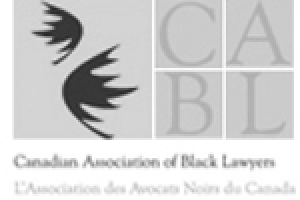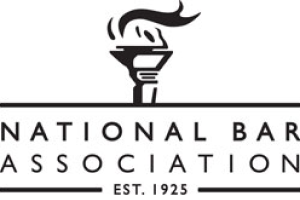Carey Mine
The History of the Carey Mine is intertwined with the Philip Carey Manufacturing Company, The Quebec Asbestos Corporation and Celotex. We will try to sort out the facts of importance to injured Canadians.
In 1888 the Philip Carey Manufacturing Company was incorporated in Cincinnati, Ohio, to make and distribute asbestos-containing products, mostly industrial-grade insulation for boilers, pipes, and other purposes in power plants, steel mills, textile mills, refineries, chemical plants, and other types of industrial facilities. The company purchased asbestos from mines in Quebec, Canada.
Philip Carey, in 1918, opened an asbestos mine in East Broughton Station, Quebec, Canada.
In 1921 the Celotex Corporation was incorporated in Delaware as a wholly owned division of Philip Carey with the purpose of being an exporter of bagasse (sugar cane) fiberboard. This is a fancy way of saying they made fiberboard for internal walls from sugar cane waste after the sugar was extracted and refined. The Celotex Corporation went on to manufacture many asbestos containing products such roofing and construction materials.
The Quebec Asbestos Company (QAC) was incorporated as a subsidiary of Carey in 1924 in Canada, and Philip Carey transferred ownership of the East Broughton mine to this corporation. The Quebec Asbestos Corporation, Ltd. (“QAC”) mined raw chrysotile asbestos fiber until 1955 in East Broughton.
When the QAC mine ran out of ore, they moved four miles up the road to Tring-Jonction and opened the Carey-Canadian Mine. The Carey-Canadian Mine was a wholly owned subsidiary of Celotex Corporation who continued to be wholly owned by Philip Carey Manufacturing Co. Are you confused yet?
The area in questions, being East Broughton and Tring-Jonction, is located approximately 30 km north-east from Thetford Mines, where the Bell and LAQ mines are located and 60 km from the world’s largest asbestos mine, the Johns-Manville Jeffrey Mine in Asbestos Quebec. Throughout this area of Quebec is a natural deposit of asbestos within the serpentine rock.
The chief operating officers and management personnel from the old QAC mine went to work at the new Carey-Canadian mine. The mine workers at the QAC mine were transplanted to the new Carey-Canadian mine. Carey-Canadian continued to sell to the same customers, used some of QAC’s old equipment, and used a similar logo to that of the QAC on their asbestos bags. This is important when trying to establish liability for asbestos from either mine because many of the places when the material was installed may have fibre from the old mine depending on installation date. The Quebec Asbestos Corporation was dissolved in 1961 to avoid liability for injury caused by fibre from the QAC mine in East Broughton, Quebec.
The Carey-Canadian mine shipped its first delivery of raw asbestos in September 1958. At the Carey-Canadian mill on the mine site raw asbestos was extracted from the ore, dried, graded and shipped. First and foremost Carey-Canadian Mines primary function was the mining, milling and processing of chrysotile asbestos fiber.
By use of conveyor belts to another area within the huge mine facility Carey-Canada had a manufacturing facility where they made many industrial insulation and pipe coverings for the Canadian market. These carried the branding of Carey, sometimes with the addition of Canada or Canadian on the packaging. The business head office was in Montreal.
Carey Pipe Covering was widely used in high temperature settings.
Carey Pipe Covering was widely used in Power Plants, Steel Mill, Paper Mills and Refineries. It was manufactured to stand up extreme temperatures common in these industries.
75% of Carey-Canadian raw asbestos was shipped to Celotex (Philip Carey) plants in the United States. The remaining 25% was sold to other manufactures of asbestos products such as Garlock, Bendix, Bestwall, Owens-Corning and Flintkote.
It was found that senior management at Philip Carey was aware of the danger of the use of asbestos as early as the 1930s. In 1963 Philip Carey had on their payroll a Dr. Mancuso to investigate and deal with the issue of asbestos at the manufacturing plants. Dr. Mancuso made recommendations to Philip Carey to impose worker safety protocol and was promptly fired.
If you want to read one of the earliest asbestos high court decisions surrounding Philip Carey and Carey Canadian Mines, Ltd. that deals with the issue of the knowledge of the industry giants who knew of the danger, yet put profit over worker safety you can find Neal v. Carey Canadian Mines, Ltd., 548 F. Supp. 357 (E.D. Pa. 1982) here:
An excerpt from the decision of August 31, 1982 “On September 23, 1963, Dr. Mancuso submitted his report to Philip Carey which recommended that the workers be warned that they were at risk because of the dangers of exposure to asbestos, that necessary protective measures be taken, and that these workers be placed under medical surveillance for early detection of asbestos-related conditions. Moreover, Dr. Mancuso recommended a special study of the Plymouth Meeting workers because of important circumstantial evidence of the mortality pattern connected with the workers’ exposure to asbestos at that plant. After submitting his report, Dr. Mancuso’s employment with Philip Carey was terminated.”
Philip Carey took no steps to protect its workers or customers. In fact, Celotex was re-incorporated in 1964 in a further attempt by the Philip Carey Manufacturing Company to distance itself from asbestos liability. Actual named Philip Carey facilities ceased the use of asbestos and transferred those product lines to Celotex Company.
A separate company, T. H. Agriculture & Nutrition (THAN) transported asbestos fibres from 1960 until 1980 for Carey-Canadian Mines Inc. to various manufacturers in the US including Philip Carey. THAN has its own asbestos trust set up as a result of its bankruptcy caused largely by its association with Carey-Canadian Mines.
Philip Carey merged with the Glen Alden Corporation in 1967. The name of the corporation changed to Panacon. There were mergers and acquisitions between corporation, being Philip Carey, Celotex and finally in 1972 Rapid American took on Philip Carey Manufacturing Company as a subsidiary. Rapid American has born the burden of asbestos liability claims brought against Philip Carey and in 2013 filed for Chapter 11 protection.
Carey-Canada mine closed in 1986
With knowledge building of the danger of asbestos causing reduced demand, together with a seven month strike by the miners demanding safer working conditions, the viability of the Carey Canada mine ended and it permanently closed on April 25, 1986.
The mill, furnace chimney and warehouse continue to stand since abandoned. A large part of the structure itself is made with asbestos concrete. The open pits and the tailing piles continue to be an environmental hazard.
Philip Carey managed to stay ahead of the asbestos liability through its various corporate entities. Celotex and Carey Canada declared bankruptcy on October 12, 1990.
At the time that Rapid purchased Philip Carey in 1972 they were not aware of the huge liability with which they were to be burdened. The Rapid American bankruptcy has proceeded through the court system and an asbestos trust to accept and pay claims against Philip Carey where product exposure occurred prior to June 1, 1967. The RA trust opened for claims submission on November 28, 2022. Claims will be processed to determine eligibility but nothing more will happen for a three years period while the trust is reviewing the number of claims to determine what payment percentage will be assigned.
If you are a client of Brown Law and you are eligible to submit an application to Rapid American (RA), it has been done and most have been reviewed and approved. Now we wait for qualified mesothelioma claims to be given a claim value and offers to be issued.
The Celotex Asbestos Trust was formed February 1, 1998 to review, process and pay all valid asbestos claims against Celotex and Carey-Canada (formerly Canadian) Mine. Holders of a paid Celotex claim can have those claim particulars submitted as evidence of Philp Carey product exposure for purposes of a RA trust claim.
It you were injured by raw asbestos from the Carey-Canadian Mine or used Celotex, Carey, Philip Carey or Carey-Canada products, contact Brown Law to quickly and efficiently put forward your claim.








